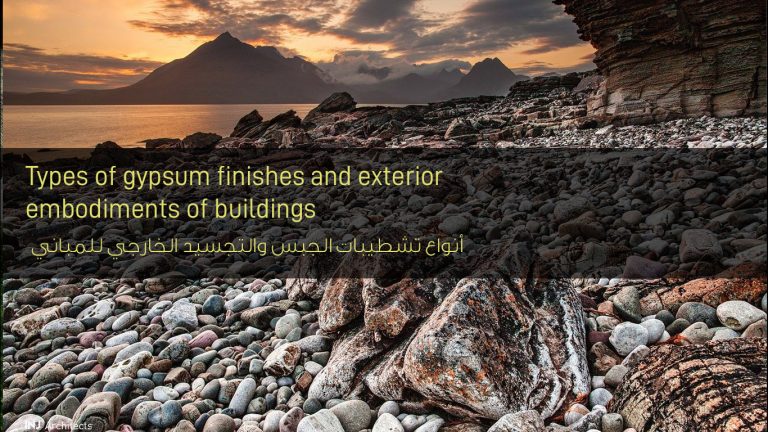Building materials properties and compatibility from the perspective of architects
Building materials properties and compatibility from the perspective of architects
The relationship between building materials and architects: Before the industrial bull, the relationship between architects and building materials was a simple and easy relationship as the architects were choosing building materials based on their availability or on the basis of the external appearance of construction, but after the industrial wealth the relationship between building materials and architects became more complicated as they They now choose materials on carefully studied, organized engineering foundations.
Construction is classified according to the architects according to the building materials used:
- Constructions made of ordinary concrete.
- Constructions made of reinforced concrete.
- Wooden constructions.
- Metal constructions.
Building materials:
1- Cement: a basic material that we use in construction throughout the ages. They produce cement from limestone, clay and added from white sand. We use it to make ordinary concrete and reinforced concrete
.
2- Iron: We use it in making concrete buildings, as it supports them and makes them highly durable. They found iron in many different forms.
3- Sand: It is a stone powder and we use it to make concrete by mixing it with cement and water to pour columns, bases and structural foundations for all constructions.
4- Bamboo wood is considered one of the latest building materials and it is extracted from plants of great strength, and it is used secondarily in the work of building structures, through the work space in which concrete is poured.
5- Bricks: We make bricks from clay and it consists of a parallel rectangle. We use it to make the walls of buildings that are being executed by architects and we combine them with iron and reinforced concrete in roofing works.
6- Gravel: It consists of crumbs present in the soil, and we use it to stick concrete to iron, where it is spread on the floors before we process the tiles until they give a flat floor.
Use of building materials for architects:
- It is used to improve construction conditions.
- Through different building materials, concrete is improved.
- Restoration and maintenance of concrete buildings and their strengthening.
- It is used in many finishes and partitions in buildings.
Modern building materials and their relationship to architects:
1- Clam shell alternatives: Clam shell replacements consist of cement and sand, along with some moisture and temperature insulating materials, and some materials that are used to process the clam well.
Oyster substitutes are considered new materials used in construction operations that compete with the high prices of building materials. They are used as a substitute for basic building materials. Through this, we use it in construction operations.
Oyster alternatives We are mark it by several things:
- It is light in weight and helps reduce loads on the facilities you use.
- Different colors, which gives the owner to reduce the price of paints later.
- Oyster substitutes are resistant to heat and fire.
- It reduces construction time.
2- Chemical materials used to treat concrete after pouring it to make it highly efficient, and these materials are a waxy layer to protect the concrete surface from any weather factors and increase the strength and cohesion of concrete and prevent drying quickly and increase the strength of concrete and its resistance to any friction that can To occur.
3- Chemical materials added to the concrete to work to improve it and increase the strength of concrete adhesion with reinforced iron, and these chemicals are compatible with water buildings, swimming pools and tanks, due to their ability to reduce the concrete density and the extent of its permeability, and work to increase the concrete’s resistance to sulfur and materials Alkalinity and sea water, which is characterized by a high degree of salts, and are benefiting through these chemicals economically, as they help in reaching the properties of the required materials while providing cement at the same time.
Read also: Choosing upholstery and how to properly match materials and colors to furnishings





